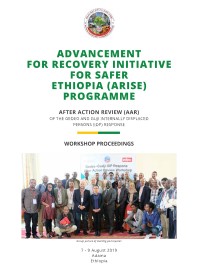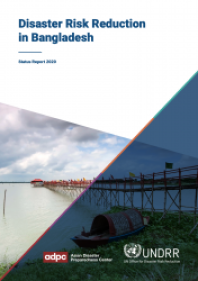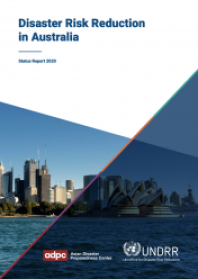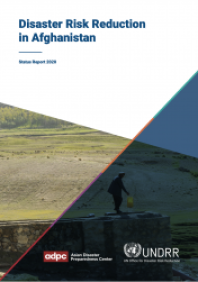- About Us
-
Who we are
-
- Publications
-
- ADPC Academy
-
MediaADPC'S NEWS
Making diaster risk reduction a part of the 'everyday development' process Making diaster risk reduction a part of the 'everyday development' process
10 Jun 2013
Bangkok, Thailand
In its 4th consecutive year, Asian Disaster Preparedness Center’s (ADPC) training course on Mainstreaming Disaster Risk Reduction into Development (MDRD) is bringing together officials from across the region to demonstrate how disaster risk reduction and management is a fundamental aspect of ‘everyday development’ planning.“Mainstreaming means normalizing disaster risk management and climate change adaptation as part of development practice; to have it thought about with the same level of importance as waterproofing a building or designing the route of a road,”
Prof. Dr. Krasae Chanawonsge, Executive Director, ADPC commented in his opening remark.With support from the Australian Agency for International Development (AusAID), 21 participants from 12 countries attended. Course participants were predominantly public sector officials from national disaster management and national planning agencies, but included development partners and other public sector professionals. Together they shared their experiences and discussed ways in which disaster risk reduction can be integrated in their development planning processes.
The weeklong activities focused on exploring approaches that will lead to safer, more resilient development in Asia-Pacific, that can be implemented once returning to their home countries.Mainstreaming disaster risk reduction is ‘common sense’
Regardless of sector, mainstreaming disaster risk reduction into development planning processes makes ‘sense in all of our work’, one participant commented. Participants agreed that mainstreaming disaster risk reduction and management across sectors not only makes sense - it’s smart economics.
With new ‘frameworks’ providing a ‘how to’ approach, participants discovered ways to integrate disaster risk management into public policymaking; land use planning; socio-economic development planning; budget and resource allocation; and project management.
“Interconnectivity is everything. Stream-lining knowledge is very important,” Ms. Anoja Seneviratne, Assistant Director of the Disaster Management Centre (DMC) in Sri Lanka commented. Ms. Seneviratne’s key professional activities at the DMC include mainstreaming DRR into the development framework of Sri Lanka.
Learning from others
In Asia-Pacific, hurdles that hinder the integration of disaster risk management into development processes are wide-ranged and vary greatly from country to country. Experience sharing provided a foundation for participating development professionals to learn from, and a starting-point for how to overcome their implementation bottlenecks.
Ms. Siripin Triprapraku, a Policy and Planning Analyst Expert from Thailand's Department of Disaster Prevention and Mitigation (DDPM), led discussions on lessons learned from the 2011 floods. From this example, participants rethought the context of the 2011 floods with consideration of how mainstreaming disaster risk reduction could prevent future damage.
Discussions focused on practical and effective ways to mainstream DRR and climate-change considerations into the development planning and implementation process at national and sub-national levels.
Course diversity and regional experience sharing made “learning easier”, Captain Asif Iqbal Asif, Deputy Director of the National Institute of Disaster Management within the Government of Pakistan's Ministry of Climate Change said.
“The course will be very useful when I return to my home country,” he continued.
[ends]
Related PublicationsLatest NewsRelated Trainings
-



